AI Tools Help Solve Complex Math and Science Questions
Summary
Here's the summary:
1. Julius AI (by unite.ai)
- - Strengths: Advanced math tutor trusted by over 1.2 million users. Solves complex math problems across various topics. Provides step-by-step explanations. Can convert and solve word problems. Plots equations instantly. Does internet searches, consolidates results.
- - Limitations: vary with plan
- - Cost: $10 up to $30 per month
- - Strengths: Mobile app for high school and university students. Covers multiple subjects. Uses voice, text, or image input. Provides explanations and relevant educational resources.
- - Limitations: Not explicitly mentioned.
- - Cost: Free.
3. Photomath (by Photomath Inc.)
- - Strengths: Mobile app that recognizes and solves math problems from photos. Covers basic arithmetic to advanced calculus. Provides step-by-step explanations. Can recognize handwritten equations.
- - Limitations: Not explicitly mentioned.
- - Cost: Not specified.
4. MathGPTPro (mathos.ai)
- - Strengths: Covers various STEM subjects. Claims 25% higher accuracy than GPT-4 in math problem-solving. Offers photomath recognition and interactive learning features.
- - Limitations: Not explicitly mentioned.
- - Cost: 1 month basic free, $20/month Prime Pay plan.
- - Strengths: Instant solutions for various math topics. Recognizes problems in multiple formats (typed, handwritten, photos). Provides step-by-step explanations.
- - Limitations: Not explicitly mentioned.
- - Cost: Not specified.
6. Symbolab (by EqsQuest Ltd.)
- - Strengths: Covers a wide range of math subjects. Offers step-by-step solutions and practice problems. Has handwriting recognition.
- - Limitations: Not explicitly mentioned.
- - Cost: Free version available, $9.95 Monthly premium subscription offered.
7. GeoGebra (by GeoGebra GmbH)
- - Strengths: Interactive software for various math topics. Connects different mathematical representations. Offers tools for creating learning materials and simulations.
- - Limitations: Not explicitly mentioned.
- - Cost: Free.
8. MathPapa (vendor not specified)
- - Strengths: Online algebra calculator with step-by-step solutions. Offers algebra lessons and practice problems.
- - Limitations: Focused primarily on algebra.
- - Cost: Free version available, premium subscription offered.
9. Wolfram Alpha (by Wolfram Research)
- - Strengths: Computational engine that handles diverse mathematical fields. Provides detailed explanations.
- - Limitations: Not explicitly mentioned.
- - Cost: Free version available, premium subscription offered.
10. MathGPT (by GotIt! Education)
- - Strengths: Offers scan-and-solve feature, step-by-step explanations, and chat support. Covers multiple STEM subjects. Claims 20% higher accuracy than GPT-4 in math problem-solving.
- - Limitations: Not explicitly mentioned.
- - Cost: Not specified.
11. Mathos AI (vendor not specified)
- - Strengths: AI-powered math solver and personalized tutor. Covers basic algebra to advanced calculus. Provides step-by-step explanations. Claims 20% higher accuracy than GPT-4 in solving math problems.
- - Limitations: Not explicitly mentioned.
- - Cost: Not specified.
General limitations of AI math tools:
- - May not always provide correct answers or explanations
- - Could potentially be used for cheating if not properly monitored
- - May not cover all possible math topics or problem types
- - Dependency on technology and internet access
These AI tools offer significant support for math and science learning, providing instant solutions, explanations, and practice opportunities. However, they should be used as supplements to traditional learning methods rather than replacements.
Video Transcript Summary
Here's a summary of the 12 AI tools mentioned in the video, along with their key functions:
- Herisa (www.heuristi.ca)
- AI-driven mind mapping tool
- Helps explore research fields
- Generates related concepts and explanations
- Free to use
- Offers limited free plan with 5 uses per month for various features
- Provides paper summaries, Q&A, and AI-generated insights
- Allows PDF uploads for analysis
- Explain Paper (explainpaper.com)
- Free tool for explaining academic papers
- Select text to get explanations at various comprehension levels
- Provides related resources and allows follow-up questions
- Allows paper uploads for AI-generated summaries and answers
- Free tool for asking questions about specific papers
- Einblick (einblick.ai)
- Free chart generation tool
- Upload dataset, describe desired chart, and generate visualizations
- Free research assistant
- Creates custom research agents to gather online information
- Provides summaries and links to sources
- Allows uploading of datasets (with size limits on free plan)
- Enables asking questions about uploaded data
- Best used with review papers due to storage limitations
- Offers paper uploads, literature reviews, and data extraction
- Provides summaries, conclusions, and AI copilot for asking questions
- Has usage limits but generous free features
- Specialized for drug and health research
- Creates searchable graphs based on research queries
- Free to use
- General-purpose AI chatbot
- Free to use for various tasks and queries
- AI search engine that provides references
- Useful for finding sources and additional information
- Microsoft's AI chatbot
- Offers more control over response types (creative, balanced, precise)
- Free to use
The video emphasizes that while these tools are powerful and free, they should be used as supplements to traditional research methods. The presenter notes that general AI chatbots (ChatGPT, Perplexity, Bing Chat) can sometimes provide broader or less academic responses, but this can be mitigated by refining queries and providing more specific instructions.
Research Tool Useage
Here's a summary of each tool with its URL (if provided) and a brief description of how it's used:
1. Herisa (www.heuristi.ca)
Users input a central topic, then use the tool to expand on it by requesting elaborations, related concepts, or specific questions. The tool generates a mind map with AI-driven responses, allowing users to build a comprehensive overview of a research field.
2. Open Read (URL not provided)
Users upload PDF documents to the platform. The tool then provides summaries, allows for Q&A about the paper, and offers an AI chat feature. It has a limited free plan with 5 uses per month for various features.
3. Explain Paper (explainpaper.com)
Users upload a paper and select specific text within it. The tool then explains the selected text at various comprehension levels (e.g., middle school, high school). It also provides related resources and allows for follow-up questions.
4. Paperbrain (URL not provided)
Users upload academic papers to the platform. They can then ask questions about the paper, and the AI generates answers based on the paper's content.
5. Einblick (einblick.ai)
Users upload a dataset or use a provided example. They then describe the type of chart they want, and the AI generates the visualization based on the data and description.
6. Tavily (t.com)
Users input a research question or topic. The tool creates a custom research agent that searches the internet for relevant information, then provides a summary with links to sources.
7. Powerdrill (URL not provided)
Users upload datasets (with size limits on the free plan). They can then ask questions about the uploaded data, with the tool providing AI-generated answers based on the dataset.
8. SCISPACE (typeset.io)
Users can upload papers, conduct literature reviews, and extract data from PDFs. The tool provides summaries, conclusions, and an AI copilot for asking questions about the uploaded content.
9. NextNet (getnextnet.com)
Specialized for drug and health research, users input a query related to their field. The tool then generates a searchable graph of related research and information.
10. ChatGPT (chat.openai.com)
Users input questions or prompts on any topic, and the AI generates human-like text responses. It can be used for a wide range of tasks, from answering questions to helping with writing or problem-solving.
11. Perplexity (www.perplexity.ai)
Users input questions or search queries. The AI provides answers along with references to sources, making it useful for finding additional information on a topic.
12. Bing Chat (www.bing.com/chat)
Users can ask questions or give prompts, similar to ChatGPT. Bing Chat offers more control over the type of response (creative, balanced, precise) and integrates internet search capabilities.
8 Best AI for Math Tools (October 2024)
The way we approach education, particularly in mathematics, has changed a lot over the past few years. As students face increasingly complex math problems, AI-powered tools have emerged as invaluable resources for learning, problem-solving, and skill development. These innovative applications offer features ranging from instant problem recognition to step-by-step explanations, catering to learners at all levels.
In this article, we explore some of the best AI math tools that are transforming the landscape of mathematical education and empowering students and educators to tackle challenges.
1. Julius
Julius AI is a cutting-edge math tutor designed to help students and professionals tackle math problems with ease. Known for its advanced computational capabilities, Julius has garnered the trust of over 1.2 million users worldwide. With Julius, you can solve complex math equations, including algebra, calculus, and trigonometry, by simply scanning the problem. It provides detailed, step-by-step explanations to ensure users fully grasp each solution, making it more accurate than leading competitors like GPT-4o, Mathway, and Symbolab by 31%.
One of its standout features is the ability to convert and solve word problems, simplifying a range of mathematical concepts from factoring polynomials to solving inequalities. Julius AI even plots equations instantly, making it an invaluable tool for visualizing complex problems. Whether you're working on sequences and series, simplifying expressions, or solving for unknown variables, Julius offers a seamless experience, turning what could be hours of frustration into just a few minutes of clarity.
Julius is widely praised for its photo math capabilities and intuitive AI explanations, helping students and math enthusiasts overcome homework challenges with ease. It offers unmatched accuracy and user-friendly solutions, making it a must-have tool for anyone looking to master math effortlessly.
Key features of Julius:
- Trusted by over 1.2 million users, Julius AI is an advanced math tutor designed to solve a wide range of mathematical problems with ease.
- Provides precise and reliable solutions, ensuring accuracy across various math topics, from algebra to calculus.
- Scan and solve math problems instantly, offering step-by-step explanations for everything from algebra and calculus to word problems.
- Converts and solves word problems while also supporting plotting equations, simplifying expressions, and handling inequalities.
- Loved for its photo math capabilities, Julius turns hours of homework frustration into minutes of clarity with instant, accurate solutions.
2. Socratic
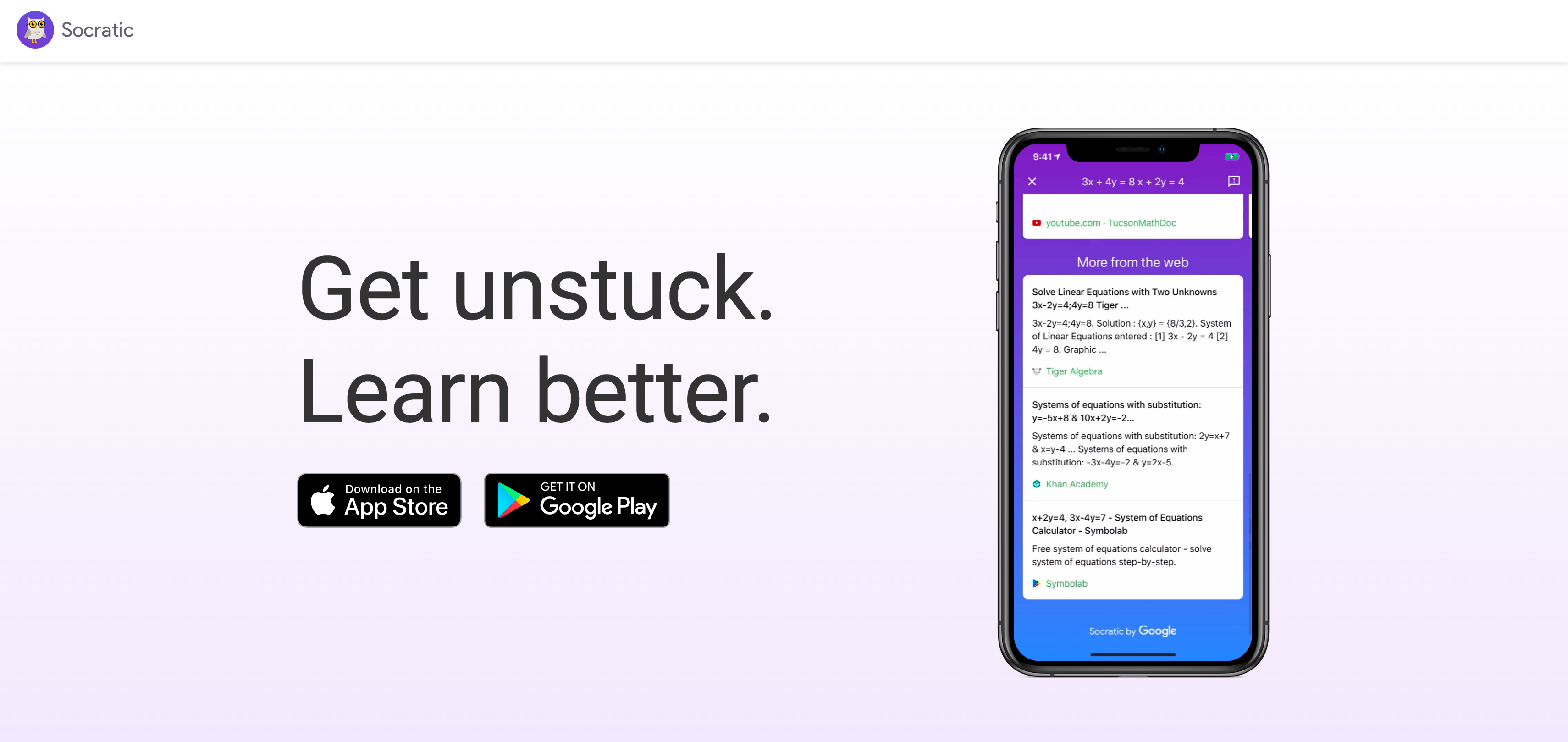
Socratic by Google is a free mobile app designed to help high school and university students with their studies by providing relevant educational resources and detailed explanations to their questions. Powered by Google's artificial intelligence, Socratic allows students to ask questions using voice, text, or images, and delivers high-quality learning materials tailored to their needs.
Acquired by Google in 2018, Socratic has become a go-to study companion for students looking for quick, reliable answers and in-depth explanations across a wide range of subjects, including math, science, literature, and social studies. By leveraging advanced AI algorithms, the app identifies the core concepts behind each question and curates the most relevant content from trusted sources across the web.
Key features of Socratic by Google:
- Versatile input methods: Students can ask questions by typing, speaking, or simply snapping a picture of their handwritten notes or textbook pages.
- AI-powered content curation: Socratic's algorithms analyze each question to identify key concepts and find the most relevant explanations, videos, and step-by-step solutions.
- Comprehensive subject coverage: The app supports a wide range of academic subjects, including Algebra, Geometry, Biology, Chemistry, Physics, History, and Literature.
- Expert-created study guides: Socratic partners with educators to provide visually engaging explanations and study guides for each subject, ensuring the content aligns with educational standards.
- Personalized learning experience: By understanding each student's question and learning style, Socratic tailors its content recommendations to their individual
3. Photomath
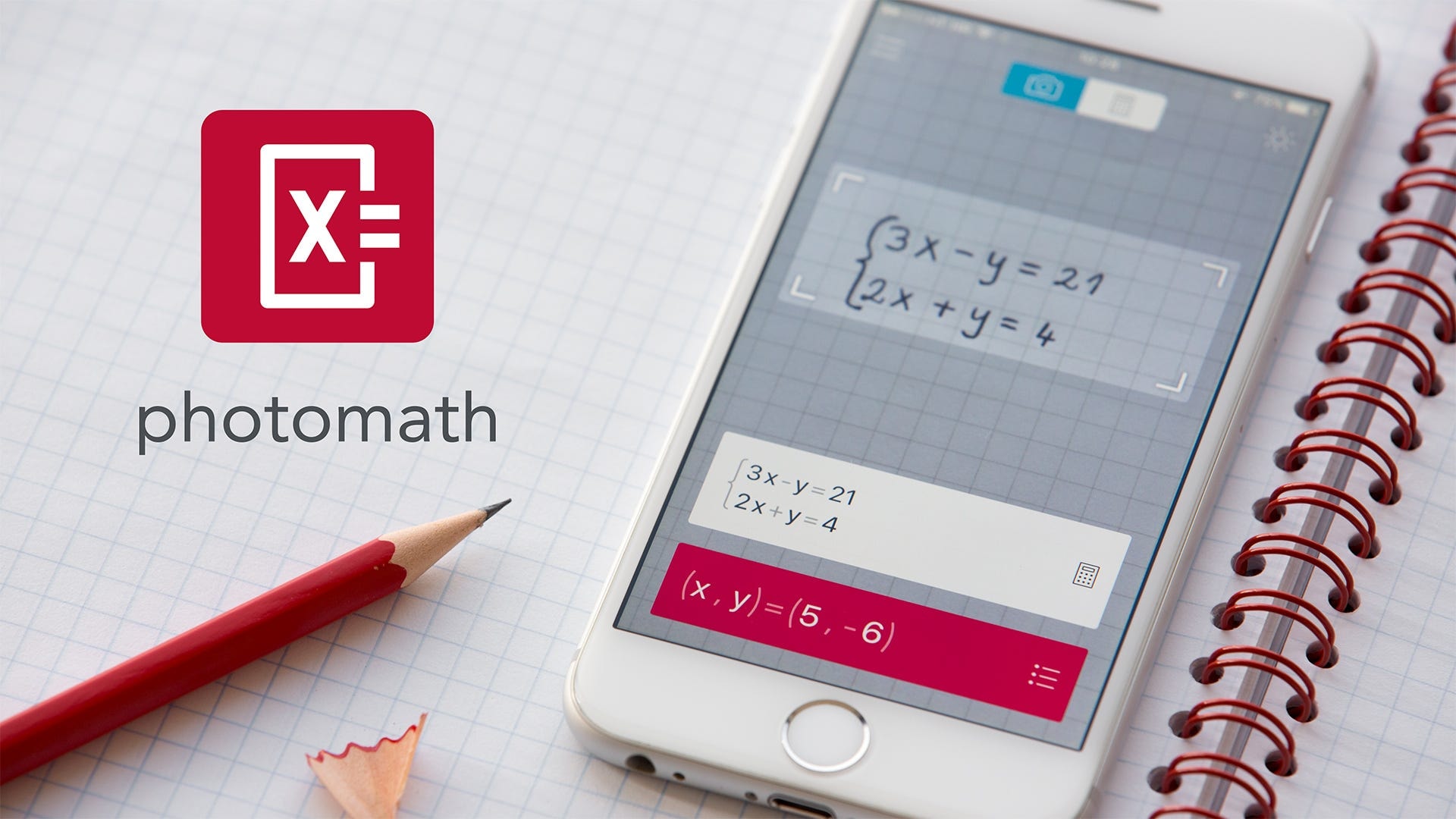
Photomath is a popular mobile app that uses advanced computer vision and artificial intelligence to provide instant solutions to math problems. By simply pointing your smartphone camera at a math equation, Photomath can recognize and solve it, providing step-by-step explanations to help users understand the problem-solving process. The app covers a wide range of math topics, from basic arithmetic to advanced calculus, making it a valuable tool for students of all levels.
One of the key strengths of Photomath is its ability to recognize handwritten equations, not just printed text. This feature uses a neural network model that has been trained on over 100,000 images of handwritten math expressions, achieving an impressive 98% accuracy rate.
Key features of Photomath:
- Instant problem solving: Simply point your camera at a math problem, and Photomath will provide the solution in real-time, along with a step-by-step explanation of how to arrive at the answer.
- Handwriting recognition: Photomath can recognize and solve handwritten math problems with high accuracy, thanks to its advanced neural network model.
- Step-by-step explanations: The app breaks down each problem into clear, easy-to-follow steps, helping users understand the problem-solving process and learn at their own pace.
- Interactive graphs: Photomath generates interactive graphs to help visualize problems, allowing users to explore key features like roots, minimum and maximum values, and more.
- Wide range of topics: The app covers math topics from basic arithmetic to advanced calculus, including algebra, trigonometry, statistics, and more, making it suitable for students at all levels.
4. MathGPTPro

MathGPTPro is a cutting-edge AI-powered math learning app for homework help and math education. By leveraging advanced Math GPT (Generative Pre-trained Transformer) AI technology, MathGPTPro provides real-time, interactive solutions to math problems across a wide range of subjects, including algebra, calculus, physics, chemistry, engineering, biology, and statistics.
The app's Beta model boasts 25% higher accuracy than GPT-4 in math and STEM-related problem-solving. MathGPTPro goes beyond traditional math solvers by offering an immersive learning experience. The AI delves into the logic behind each question, providing not just answers but a comprehensive understanding of methods and principles. With its photomath recognition technology, students can simply snap a picture of a problem, and MathGPTPro instantly analyzes and solves any equation or problem.
Key features of MathGPTPro:
- AI-enhanced understanding: MathGPTPro provides step-by-step solutions and detailed explanations, ensuring students grasp the underlying concepts.
- Photomath simplicity: Users can easily input problems by taking a photo, and the app's advanced recognition technology does the rest.
- Wide range of subjects: MathGPTPro covers various STEM subjects, including math, physics, chemistry, engineering, biology, and statistics.
- Interactive learning: The app offers animated tutorials and interactive problem-solving, making learning engaging and enjoyable.
- Always-ready homework help: With MathGPTPro, students have access to a personal tutor 24/7, providing assistance whenever needed.
5. Mathway
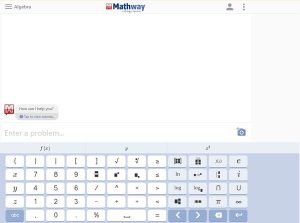
Mathway is a powerful math problem solver app that provides instant solutions to a wide range of math problems, from basic arithmetic to advanced calculus. Developed by Chegg, a leading education technology company, Mathway has become a go-to resource for students seeking quick, reliable answers to their math questions.
Mathway can recognize and solve problems entered in various formats, including typed equations, handwritten expressions, and even photos of textbook pages. The app's advanced AI algorithms analyze the input and provide accurate, step-by-step solutions, making it easy for students to follow along and learn from the problem-solving process. This versatility makes Mathway an indispensable tool for students who may struggle with typing out complex equations or prefer to work with handwritten notes.
Key features of Mathway:
- Comprehensive math coverage: Mathway supports a wide range of math subjects, including basic math, pre-algebra, algebra, geometry, trigonometry, precalculus, calculus, and statistics.
- Step-by-step explanations: The app provides detailed, step-by-step solutions to help students understand the problem-solving process and reinforce their learning.
- Multiple input methods: Students can enter problems by typing, handwriting, or simply taking a picture of their textbook or worksheet.
- Graphing capabilities: Mathway includes a powerful graphing calculator that allows users to plot and analyze functions, making it a valuable tool for advanced math courses.
- Customizable experience: Users can select their preferred solving method and customize the app's settings to suit their learning style and needs.
6. Symbolab
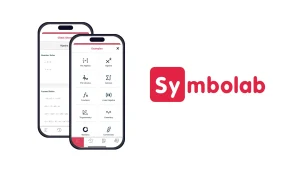
Symbolab is an advanced mathematics education platform that leverages artificial intelligence to provide step-by-step solutions to a wide range of math problems. Developed by Israeli startup EqsQuest Ltd. and released in 2011, Symbolab has become a go-to resource for students seeking to understand complex mathematical concepts and improve their problem-solving skills.
Symbolab offers comprehensive coverage of math subjects, ranging from pre-algebra and geometry to calculus, trigonometry, and beyond. The platform's AI algorithms can interpret and solve problems entered in various formats, including typed equations, handwritten expressions, and even photos of textbook pages. This versatility makes Symbolab accessible to students with different learning styles and preferences.
Key features of Symbolab:
- Step-by-step solutions: Symbolab provides detailed, step-by-step explanations for each problem, helping students understand the problem-solving process and reinforce their learning.
- Handwriting recognition: The platform's advanced AI can recognize and solve handwritten math problems with high accuracy, making it easy for students to get help with their handwritten homework or notes.
- Comprehensive subject coverage: Symbolab supports a wide array of math topics, including algebra, geometry, trigonometry, calculus, statistics, and more.
- Interactive graphing: The platform offers a powerful graphing calculator that allows users to plot and analyze functions, making it a valuable tool for visualizing complex mathematical concepts.
- Practice and quizzes: With a paid subscription, students can access personalized practice problems and quizzes to hone their skills and track their progress.
7. GeoGebra
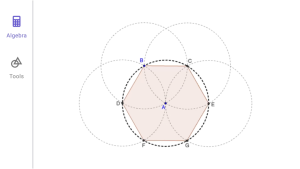
GeoGebra is an interactive mathematics software suite for learning and teaching mathematics and science from primary school to university level. Developed by Markus Hohenwarter in 2001 as part of his master's thesis at the University of Salzburg, GeoGebra has evolved into a leading provider of dynamic mathematics software, supporting STEM education and innovations in teaching and learning worldwide.
GeoGebra connects geometry, algebra, spreadsheets, graphing, statistics and calculus in one easy-to-use package. This dynamic linkage between different mathematical representations allows students to explore and understand mathematical concepts in a visual and interactive way. GeoGebra's user-friendly interface and wide range of tools make it accessible to students of all levels.
Key features of GeoGebra:
- Dynamic geometry: GeoGebra allows users to create and manipulate geometric constructions with points, vectors, segments, lines, polygons, and conic sections. These constructions can be modified dynamically, enabling students to explore geometric relationships and properties.
- Algebraic input: Equations and coordinates can be entered directly using the keyboard. GeoGebra's algebra view displays the symbolic representation of constructed objects, facilitating the connection between geometry and algebra.
- Spreadsheet integration: GeoGebra includes a spreadsheet view that allows users to explore mathematical concepts using a familiar interface. Data from the spreadsheet can be easily plotted in the graphics view.
- Interactive graphing: Functions can be defined algebraically and then dynamically modified using sliders. Students can investigate the behavior of functions and the effects of parameters on their graphs.
- Scripting and tools: GeoGebra offers a range of scripting options and tools for creating interactive learning materials, simulations, and animations. These can be easily shared online through the GeoGebra Materials platform.
8. MathPapa

MathPapa is an online algebra calculator and AI educational tool designed to help students learn and practice algebra concepts. The platform offers step-by-step solutions to a wide range of algebra problems, making it an invaluable resource for students seeking to improve their understanding of the subject.
One of the key strengths of MathPapa is its comprehensive coverage of algebra topics, including linear equations, quadratic equations, inequalities, graphing, factoring, and systems of equations. The platform's AI-powered calculator can solve problems entered in various formats, such as typed equations or expressions, providing detailed, step-by-step explanations to help students follow the problem-solving process.
Key features of MathPapa:
- Step-by-step solutions: MathPapa provides detailed, step-by-step explanations for each problem, breaking down the solution process to help students understand the underlying concepts and techniques.
- Algebra lessons: The platform offers a collection of algebra lessons, covering key topics and providing clear explanations and examples to support student learning.
- Practice problems: MathPapa includes a practice section where students can test their understanding by solving algebra problems and receiving immediate feedback on their answers.
- Mobile app: The MathPapa mobile app, available for Android devices, allows students to access the calculator and learning resources on the go, making it convenient to practice and learn algebra anytime, anywhere.
- Free and premium options: While MathPapa offers a free version with basic features, students can upgrade to a premium subscription for access to additional resources, such as unlimited step-by-step solutions and ad-free experience.
Enhancing Mathematical Understanding with AI
The integration of AI in education has opened up new possibilities for students and educators alike. These advanced tools not only solve math problems but also explain mathematical concepts in ways that traditional methods often struggle to achieve. By providing step-by-step solutions, AI math tools help students grasp the underlying principles behind complex equations and formulas.
For advanced math students, these AI-powered applications offer an opportunity to explore challenging topics and push their boundaries. Whether it's tackling calculus, linear algebra, or statistics, these tools can provide instant feedback and guidance, allowing students to progress at their own pace. Additionally, the visual representations and interactive elements offered by many of these platforms make abstract mathematical concepts more tangible and easier to understand.
While various AI-based applications have gained popularity, it's important to remember that they should complement, not replace, traditional learning methods. Educators can leverage these AI tools to create more engaging lesson plans, address individual student needs, and provide personalized support. By combining human expertise with AI capabilities, we can create a more effective and inclusive math learning environment that helps students overcome math challenges and develop strong math skills for the future.
As technology continues to evolve, we can expect even more sophisticated AI-powered educational tools to emerge, further enhancing our ability to teach and learn mathematics effectively. The future of math education looks bright, with AI serving as a powerful ally in nurturing the next generation of mathematical thinkers and problem-solvers.
June 22nd, 2024
Top 10 Math AI Tools
By Josephine Santos ·
Overview
Mathematics has long been a subject that either fascinates or frightens students. Yet, in the digital age, Artificial Intelligence has become a game-changer, revolutionizing how we approach learning and understanding mathematics. For students grappling with math concepts or striving to advance their skills, AI tools have emerged as indispensable allies. Here’s a look at the top 10 AI tools that are reshaping math education, making it more accessible, interactive, and fun.

1. Wolfram Alpha
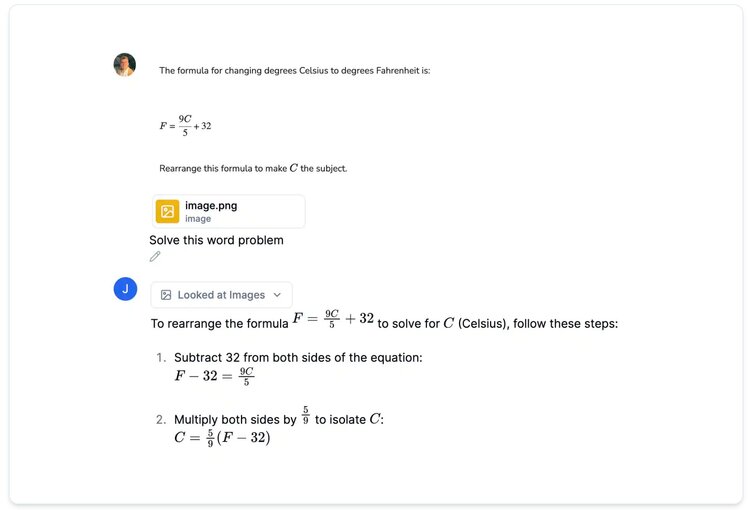
2. Julius
Julius AI stands out in the realm of educational AI tools by offering the most powerful AI math-solving engine. With features like scan-and-solve, step-by-step answer generation, and chat explanations, Julius AI is not just a tool but a companion on the journey to math excellence. Whether for homework help or mastering complex concepts, Julius is the ultimate AI math tutor.
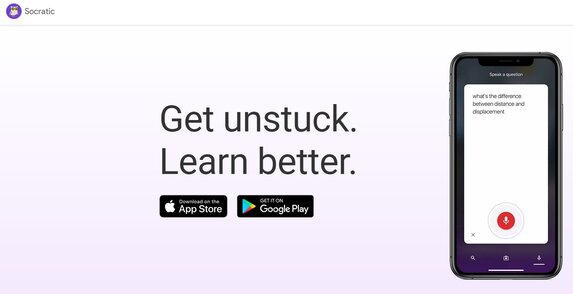
3. Socratic

4. Photomath

5. Maple Calculator
Maple Algebra Calculator, a free tool by MapleSoft, is designed to solve complex math problems swiftly. Its strength lies in its comprehensive features, including advanced function solving, graphing tools, and educational games, making math learning both effective and engaging.
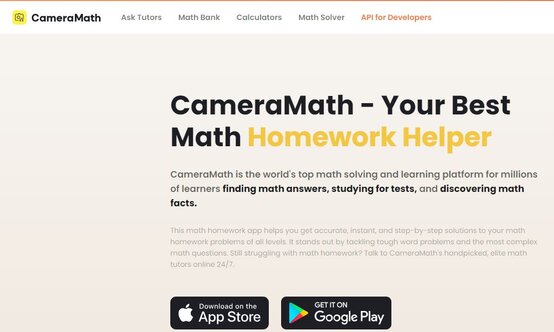
6. CameraMath
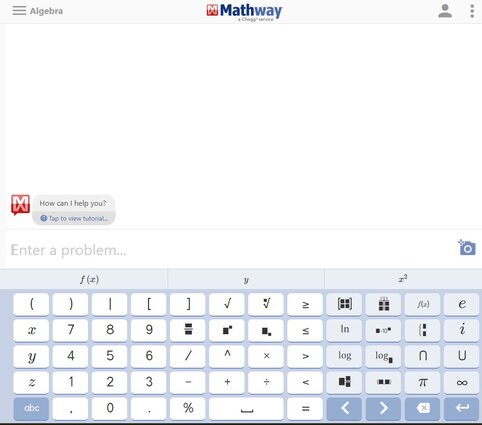
7. Mathway
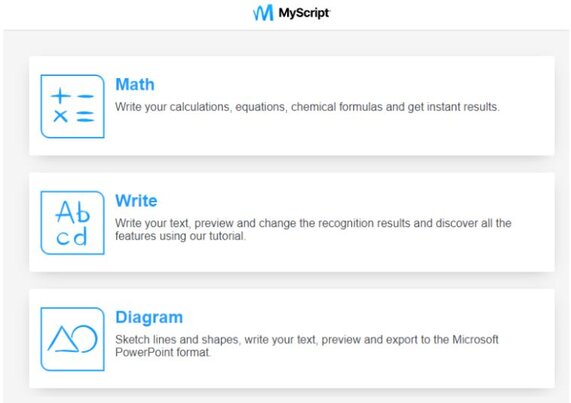
8. MyScript
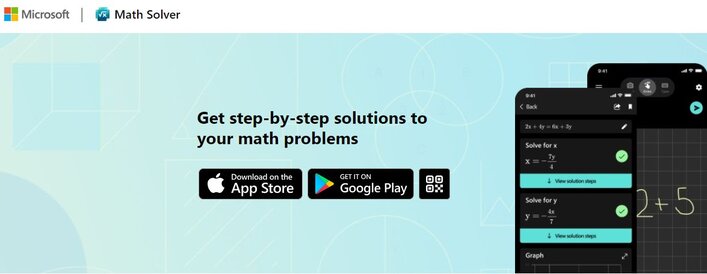
9. Microsoft Math Solver
Microsoft's entry into AI tools for calculus offers a robust solution for solving a vast array of math problems. With its intuitive design, students can input or scan problems to receive comprehensive solutions and explanations, making learning more dynamic and effective.
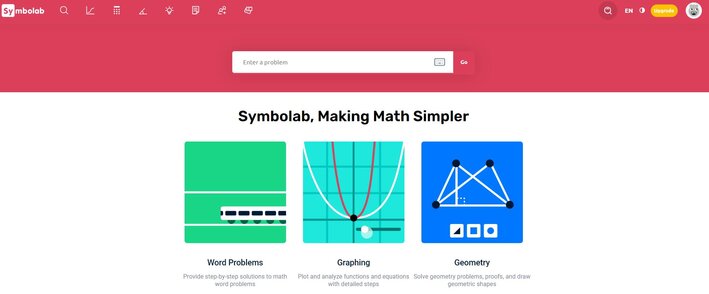
10. Symbolab
Conclusion
The integration of AI into math education has opened new horizons for personalized, interactive, and effective learning. These top 10 AI tools, alongside empower students to conquer math challenges with confidence. As technology evolves, the future of math education looks bright, promising a world where every student can excel in mathematics with the help of AI.
This AI Tool Helps Me Solve Complex Math and Science Questions
Gone are the days of chasing friends or professors to understand tricky concepts. Now, you can resolve all your queries from the comfort of home using AI tools. While there have been countless instances when ChatGPT gets things wrong, I found a tool that handles complex math and science questions much more effectively.
Simplifying Complex Problems With MathGPT
MathGPT is an AI tool I recently discovered, and it’s by far the most accurate AI resource I've used for studying. As of now, MathGPT includes four different sections: MathGPT, PhysicsGPT, AccountingGPT, and ChemGPT.
I've always been a fan of studying visually. That’s why I usually turn to YouTube first whenever I have a question before resorting to an AI tool. Realistically, though, YouTube doesn’t always have the answers I need.
While it’s easy to find videos on core topics, the chances of coming across my exact question are slim. This is where AI tools can help—all you have to do is enter your question, and the tool will generate a detailed solution in seconds. For example, I couldn't figure out how to solve this multiple-choice accounting question.
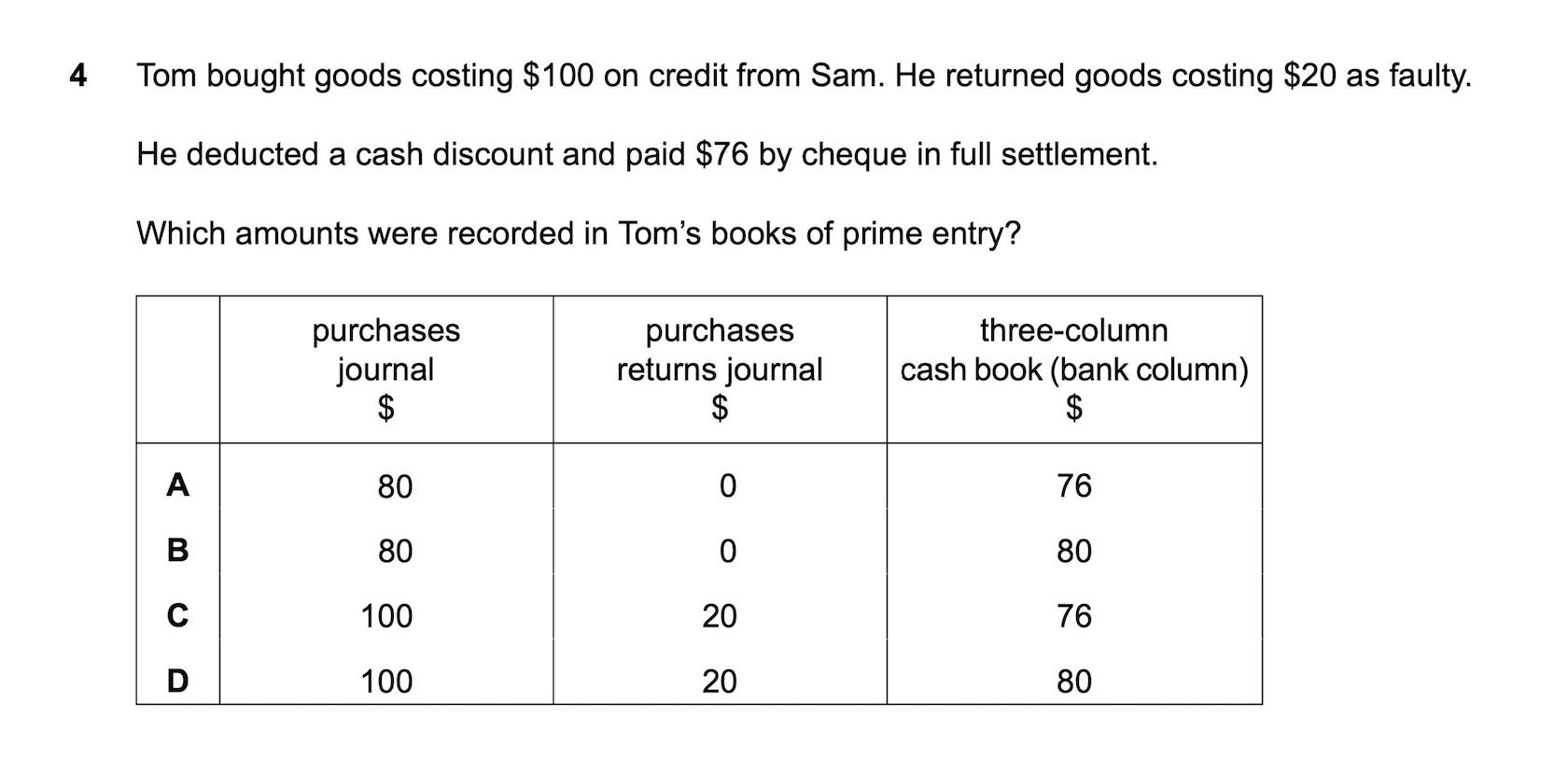
I pasted it into MathGPT, and voila!
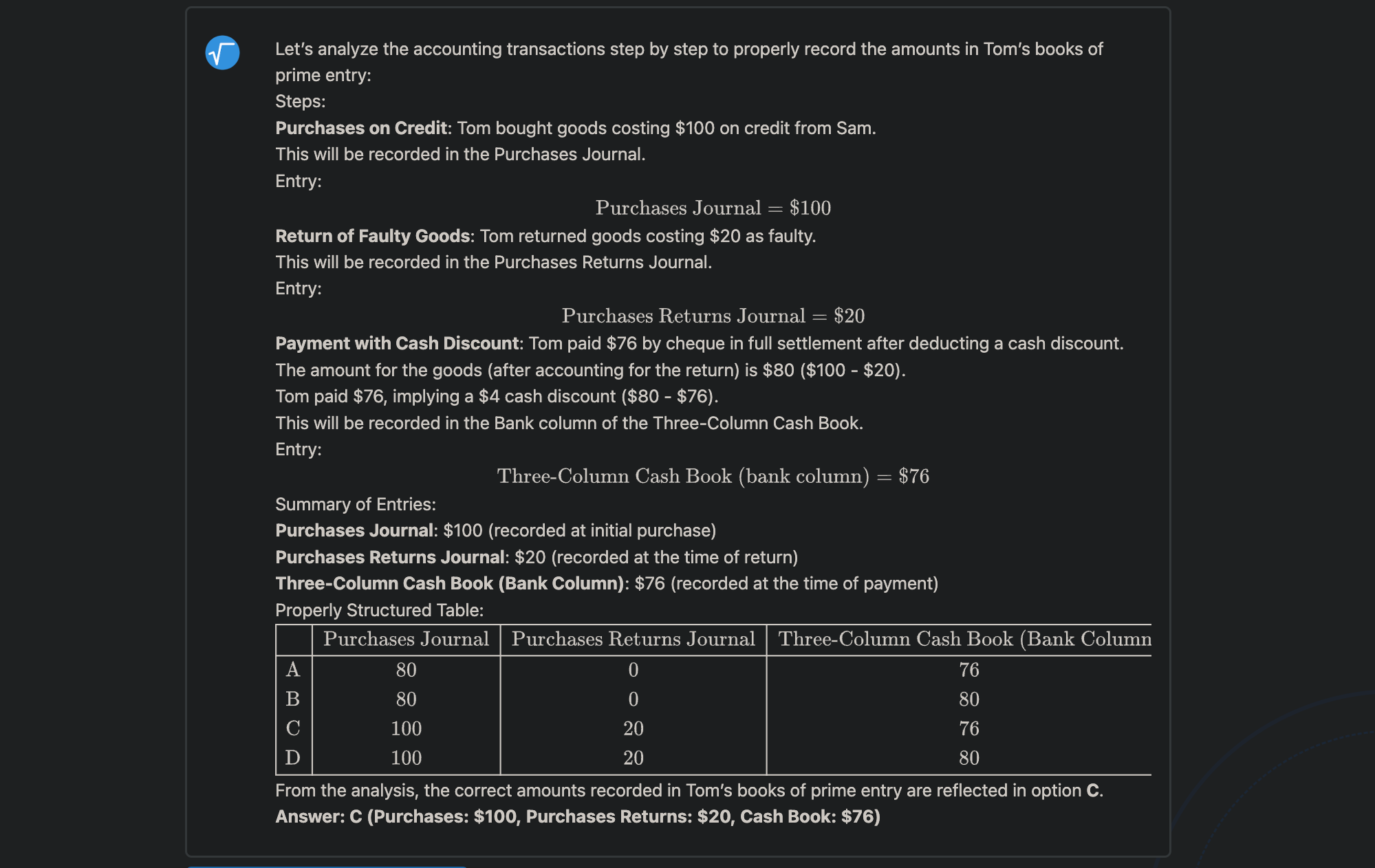
Even if I do find the exact question on the internet, the solutions are often full of complex notations and symbols, and sometimes just looking at them makes me want to stop studying for the day. The AI, though, takes a different approach.
MathGPT breaks down complex problems into steps. You can also hit the Generate Video Explanation button to create a script and video explaining the solution within minutes. Even though it's essentially the same solution, the steps are timed with the explanation on the screen, which has been really helpful for me.
The best part about MathGPT is that the video solutions are tailored to your needs. For example, in my Calculus class, my professor solved a question using an equation I hadn’t seen before. I sat there blank, trying to follow along, but nothing clicked. As soon as class ended, I asked MathGPT to solve the same question, specifying that I wanted it solved using the method I was familiar with.
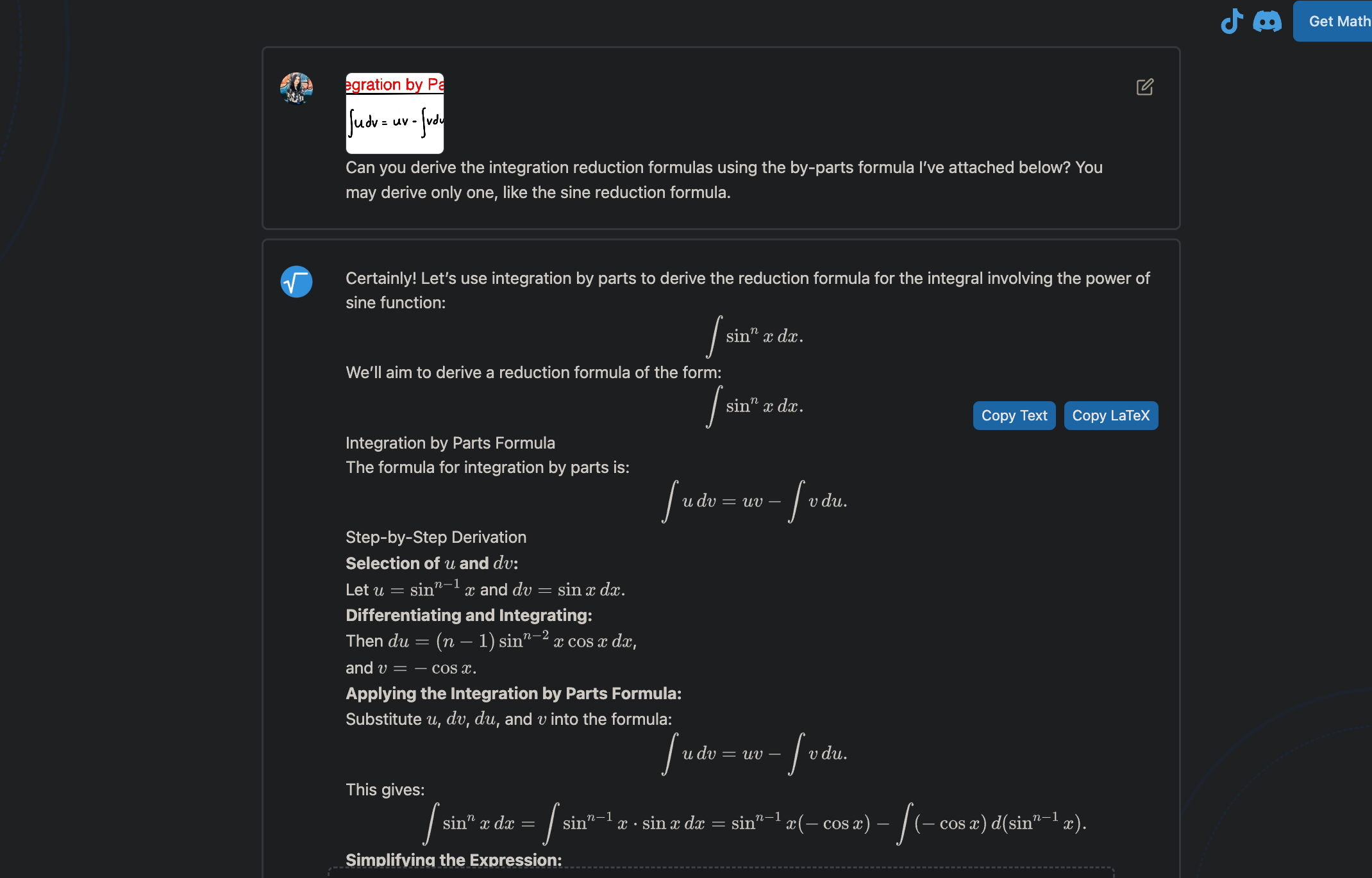
Within seconds, MathGPT worked its magic, and I finally understood the problem through the video explanation it generated! You can view the video it generated on this webpage.
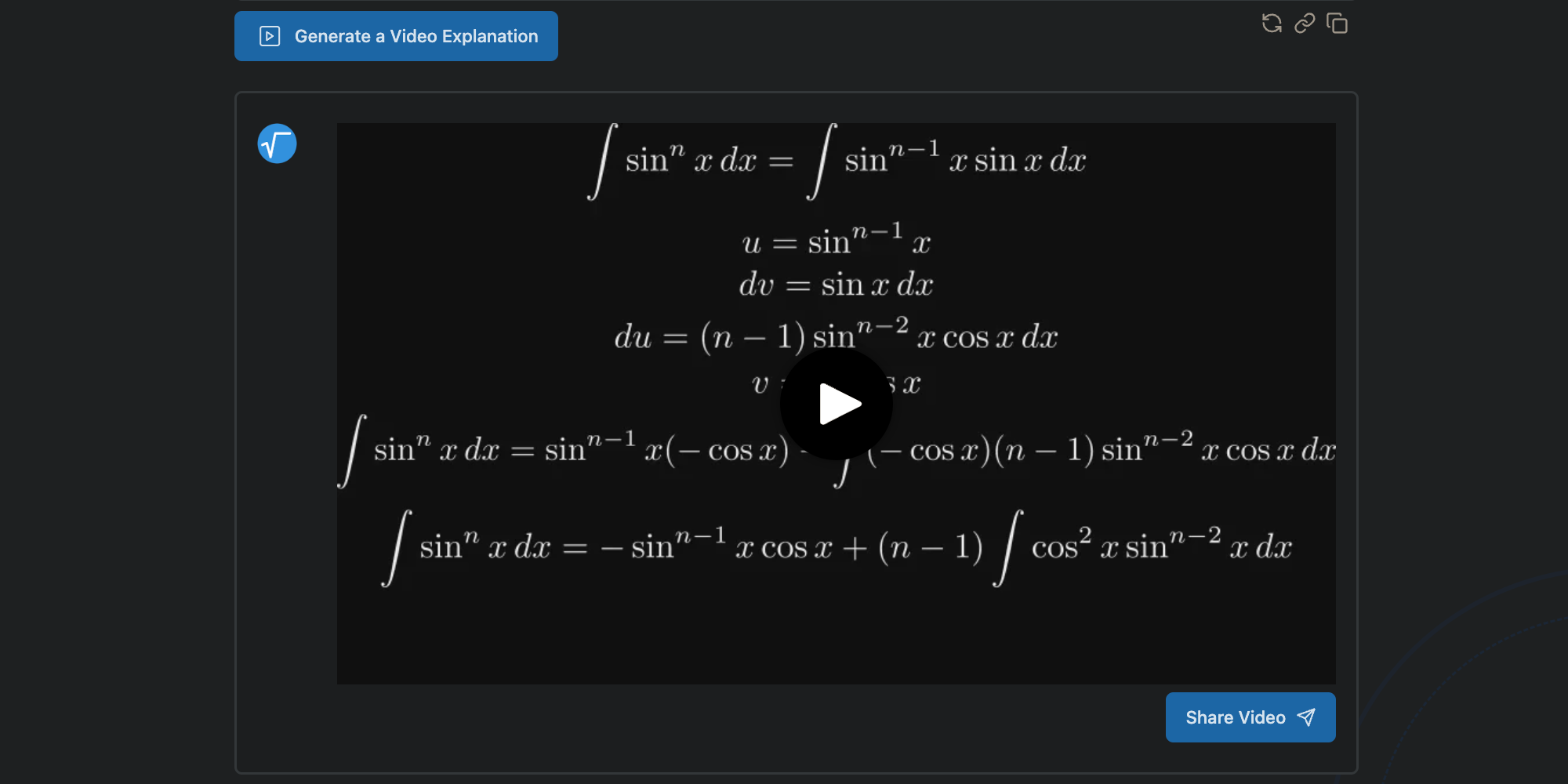
Generate Tailored Practice Problems Instantly
I've always believed that solving practice questions once you understand the concept is the only way to crack STEM subjects.
While using the assigned coursebook for practice is an option, college-level textbooks often have hundreds of questions, and finding the ones that best match what you need to practice can be overwhelming. This is where MathGPT has been a huge help. My exams often include questions similar to those tested in my assignments. So, I usually upload a few of my assignment questions and ask MathGPT to generate similar ones for me, with either the same or a higher difficulty level.
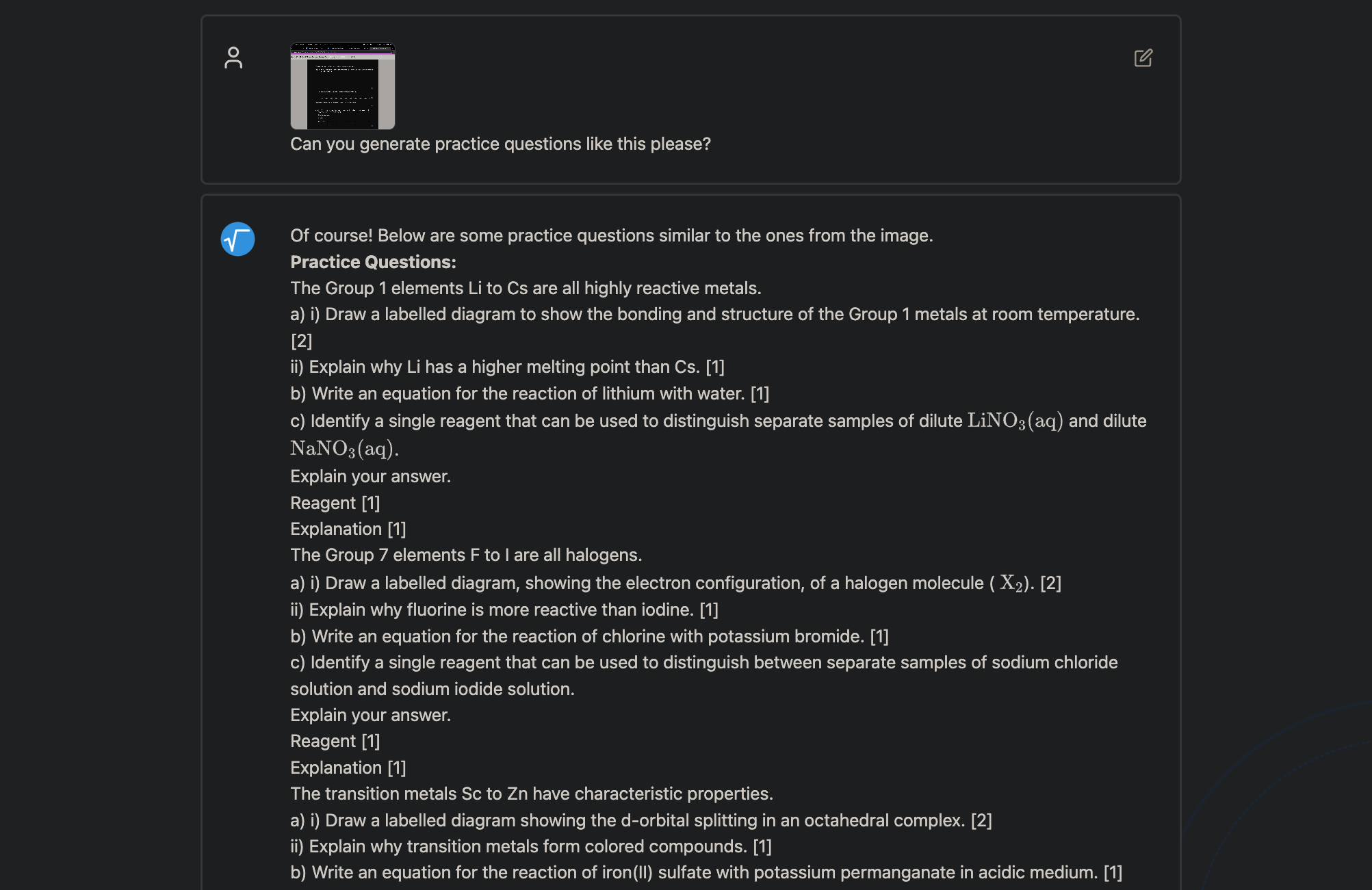
Additionally, when I ask MathGPT to explain a concept or question to me, I ask it to generate similar questions right after to ensure I've understood the concept completely.
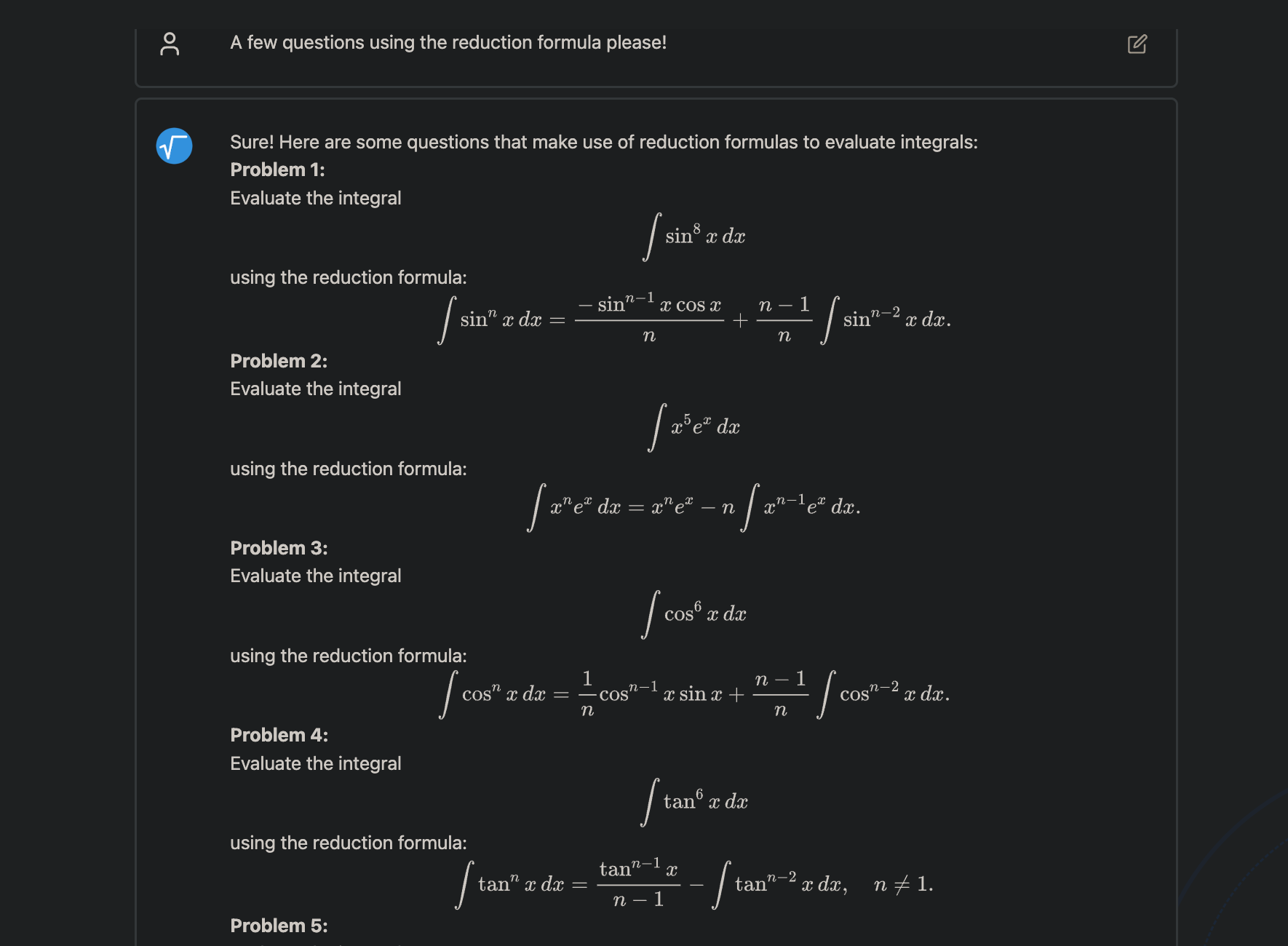
This way, I save myself the time of sifting through endless questions and can focus on topics I struggle with most. Should I get stuck on a question, all I need to do is ask MathGPT to solve it for me!
Let AI Check Your Work
We are all guilty of silly mistakes like multiplying two numbers incorrectly. When this happens to me, I end up spending minutes staring at my solution, trying to pinpoint where I went wrong. This can be frustrating, especially for lengthy questions where I understand the concept but get lost in my work because of a simple calculation error I made.
Another thing MathGPT can help with is checking your solutions and identifying errors. For example, I pasted a physics question on kinematics along with my work and asked MathGPT to verify my solution because my final answer was incorrect.
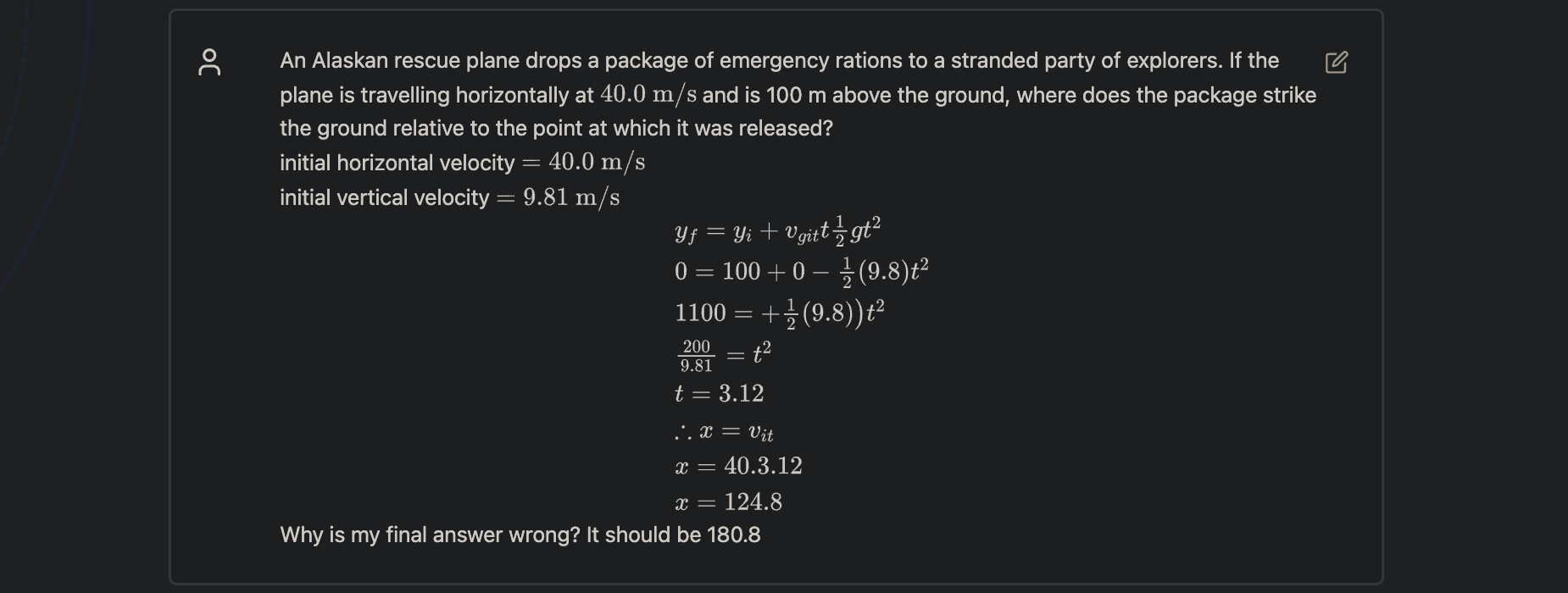
The AI tool solved the problem and pointed out that the error stemmed from an incorrect calculation of the time of flight. This happened because I accidentally divided two numbers wrong when I was in a hurry.
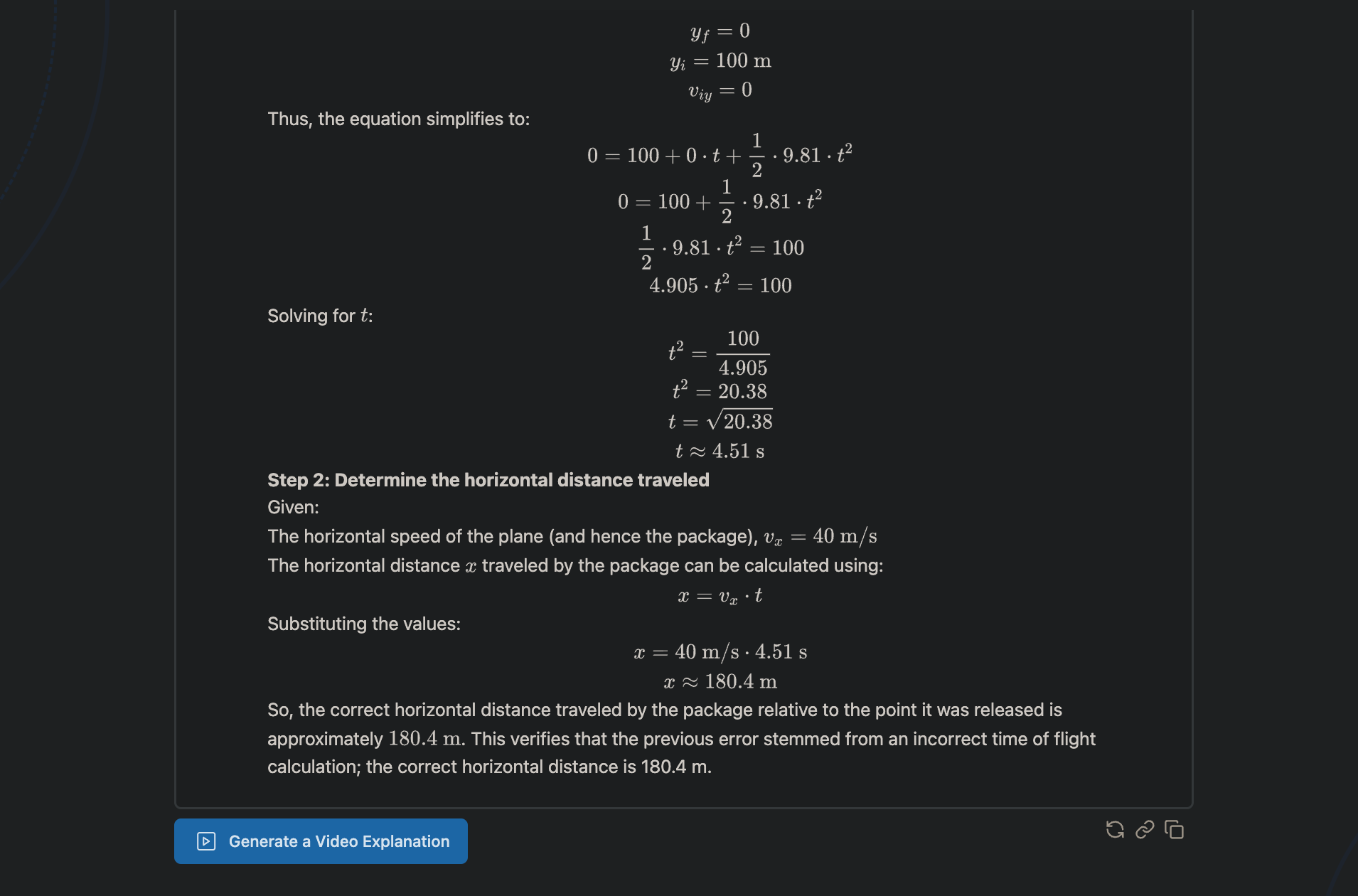
Not only does this save me a ton of time that I could put toward tackling more challenging problems, but it also helps me reinforce my understanding of concepts.
MathGPT has quickly become a tool I can't imagine living without. It's the best AI tool out there to solve math problems and strengthen your concepts, and since it isn't limited to math only, I'd highly recommend exploring the website if you're a student.
Mathos AI, Your only math solver and personal AI tutor
Mathos AI is an AI-powered math solver and personalized tutor, built to help students solve complex math problems while enhancing their understanding of math concepts at all levels. Trusted by over 2 million students from more than 200 countries, Mathos AI is more than just a calculator—it’s a comprehensive math learning solution for students, teachers, and lifelong learners alike. Whether you’re tackling basic algebra, geometry, or advanced calculus, Mathos AI provides accurate, instant solutions with detailed, step-by-step explanations to help you master math with confidence.
With over 10 million questions solved, Mathos AI has established itself as a proven and trusted math solver for learners at all academic levels. Our beta model achieves 20% higher accuracy than GPT-4 in solving math problems, offering the precision and reliability that students need to excel in their studies.
More than just a math problem solver, Mathos AI delivers an interactive learning experience to help students better understand challenging concepts. Our AI-driven platform provides homework help, personalized math tutoring, and powerful tools like an advanced graphing calculator and a dedicated calculator for quick, reliable solutions to any math problem.
Mathfuls MathGPT, Even Better Than GPT-4
MathGPT by Mathful can scan image uploads of math problems with unsurpassed accuracy and deliver detailed step-by-step solutions, offering an edgier alternative to GPT-4 and changing the way students tackle math problems.
How MathGPT Uses Generative AI To Make Mathematics More Accessible To Everyone

MathGPT is hailed as a "even better, more accessible" way to teach mathematics.
MathGPTOne of the headliner features of iPadOS 18, which powers the new iPad mini announced this week, is something Apple calls Math Notes. Available in the also-new Calculator app, Math Notes is described by the Cupertino-based tech titan by helping users “mathematical expressions, create and use variables, or graph equations—for example, when learning new concepts in class, day-to-day budgeting, planning an event, home remodeling, and more” using an Apple Pencil of some lineage.
Although Apple touts Math Notes as an interplay of hardware, software, and intelligence, the reality is the functionality also involves accessibility as well. Much to the chagrin of every old school mathematics teacher who said we’d never have a calculator with us at all times nor could computers do math for us, Math Notes stands as concrete repudiation of those notions. From an accessibility viewpoint, Math Notes is a veritable godsend for anyone—students or otherwise—who has disabilities that make doing math problems difficult. From cognition to literally writing out numbers and symbols, Math Notes transcends sheer convenience. It can be a more accessible way to do math in ways truly only Apple could do because they famously aspire to tightly control the whole stack.
MathGPT strikes me as similar in conceit, if not exactly in execution.
Peter Relan is chairman of edtech company GotIt! Education, creators of MathGPT. Relan, born to a refugee settlement in India and emigrated to America at 18, explained to me in a recent interview over email that his parents, while poor, scrimped and saved enough money to send him to what he described as “the best school in Delhi.” It was at that school where Relan met a “brilliant” math teacher who ”opened my eyes to the beauty and potential of mathematics.” Mathematics, he said, proved itself the ticket to a better life in the United States, as Relan would enroll at UCLA to study computer engineering. In order to support himself, he became a math tutor—something Relan said was a “full-circle moment that allowed me to share the gift of mathematical understanding with others.” His lived experiences gave him a front-row seat to witnessing how math can be “a gateway to incredible opportunities”—particularly for those who, like him, emerge from underprivileged backgrounds.
“I witnessed how quality math instruction could build confidence, expand career options, and fundamentally change the trajectory of a person’s life,” Relan said of why math resonates with him. “This realization became the driving force behind my passion for MathGPT. While we can’t clone human tutors, we can harness the power of AI to provide even better, more accessible math help poised to help millions.”
Relan characterized MathGPT as more than utilitarian; the overarching mission is to “democratize high-quality math education.” He went on to say that by combining cutting-edge generative AI technology with so-called “carefully curated curriculum alignment,” the end result is MathGPT is, according to Relan, “a cheat-proof, infinitely patient tutor that can support students and turbocharge instructors’ capacities.” For students, Relan said MathGPT offers 24/7 personalized support and more. For instructors, it serves as a “time-saving course manager.”
As its name implies, MathGPT operates similarly to how, say, ChatGPT does: the user inputs a query or other information, then the system responds in kind based on said data. As the MathGPT website notes, the software “coaches students through any concept or problem by prompting, guiding, and encouraging students on their learning journey.” MathGPT doesn’t simply give up answers; rather, it “asks students thought-provoking questions alongside the material, deepening their understanding of key concepts” in an eminently scalable manner so as to reach every student with “limitless personalized tutoring.”
MathGPT, currently in beta in more than 30 community colleges nationwide, exists because, as Relan told me, it “helps students get the college-level math support they need—without giving answers away while automating labor-intensive teacher tasks like course planning, assignment creation, and grading.” MathGPT’s march towards general availability comes at an opportune time, as the passage of California Assembly Bill 1705 is the harbinger of the elimination of remedial math classes taught at the state’s community colleges. The bill, which Relan said ostensibly streamlines pathways to graduation, has the sordid underbelly of ”decreased enrollment and widened disparities for disadvantaged and part-time students.” By contrast, MathGPT was built with inclusivity top of mind. Relan boasted about the software meeting “the highest accessibility, security, and compliance standards” in existence today, including the Americans with Disabilities Act and Voluntary Product Accessibility Template. Moreover, Relan noted several of MathGPT’s new features include AI support settings which, for instance, enable students to easily upload their work and get instantaneous, personalized feedback on the work they provided.
Speaking of feedback, Relan said the reaction to the betas have been positive. At institutions such as De Anza, Fresno City College, and Pasadena City College in California, Relan said MathGPT has surpassed 50,000 sessions with students, with students averaging an additional 12.8 hours of support. Some mathematics instructors, he added, have excitedly noted “they’ve seen a major improvement in students’ grades.”
"The assignments I give on MathGPT are averaging a full letter grade higher than other assignments,” said one anonymous testimonial shared with me. “Students are telling me that they notice a difference too!”
As to the future for MathGPT, Relan has big dreams.
“My hope is MathGPT can be that transformative force for countless students, opening doors and building the confidence needed to pursue STEM careers,” he said. “I’m excited for the potential that MathGPT has to create a more equitable future where every student has access to the kind of life-changing math instruction that shaped my own path.”
About mathgpt.ai
The MathGPT Mission
To provide an AI-Powered, affordable, and comprehensive instructor and student-facing solution for higher education STEM classrooms, starting with math.
MathGPT is an affordable web-based app built to amplify the teaching capacities of STEM educators. MathGPT blends advanced AI tutoring with easy-to-implement course and assignment management, making it immediately useful in a single classroom or an entire department.
For instructors, MathGPT is the teaching app that gives them the superpower to teach every student 1-on-1, all the time. MathGPT enables truly personalized education at scale, amplifying the abilities of any instructor.
For students, MathGPT is the judgement-free, conversational tutor they’ve always wanted. The AI tutor coaches them through any problem so they learn the material, anytime and from anywhere.
Meet the Executive Team
Meet the team behind MathGPT.

Hung Tran
Founder
Hung founded Got It as a graduate student and now serves as the President. Prior to Got It, he worked as a software engineer and led the international effort with MIT OpenCourseWare and RICE OpenStax to develop a national scale EdTech program to serve millions of students in Vietnam. Hung holds a Ph.D. in Computer Science from The University of Iowa, as well as a Bachelor of Engineering from Hanoi University of Science and Technology.

Matt Gabler
General Manager
Matt serves as the General Manager of Got It. He joined in 2015 as the VP of Operations. Now in an advisory leadership role, Matt helps lead business development and partnerships for Got It’s growing portfolio of products. Prior to Got It Matt held a variety of senior technology operations roles at Lyft and Google. Matt holds a BS in Genetics from the University of Rochester and an MBA degree from Duke University.

Edsel Clark
Vice President of Operations
Edsel joined the Got It team in December of 2017. As the Vice President of Operations he is focused on ensuring that our instructors and students have a great experience using MathGPT. Having spent 15 years in public education, he has a passion for students and a deep background in pedagogy. Edsel is a graduate of the University of Illinois (B.S. Math Education) and holds graduate degrees (MaEd. & Ed.D.) in Administration and Leadership.


No comments:
Post a Comment